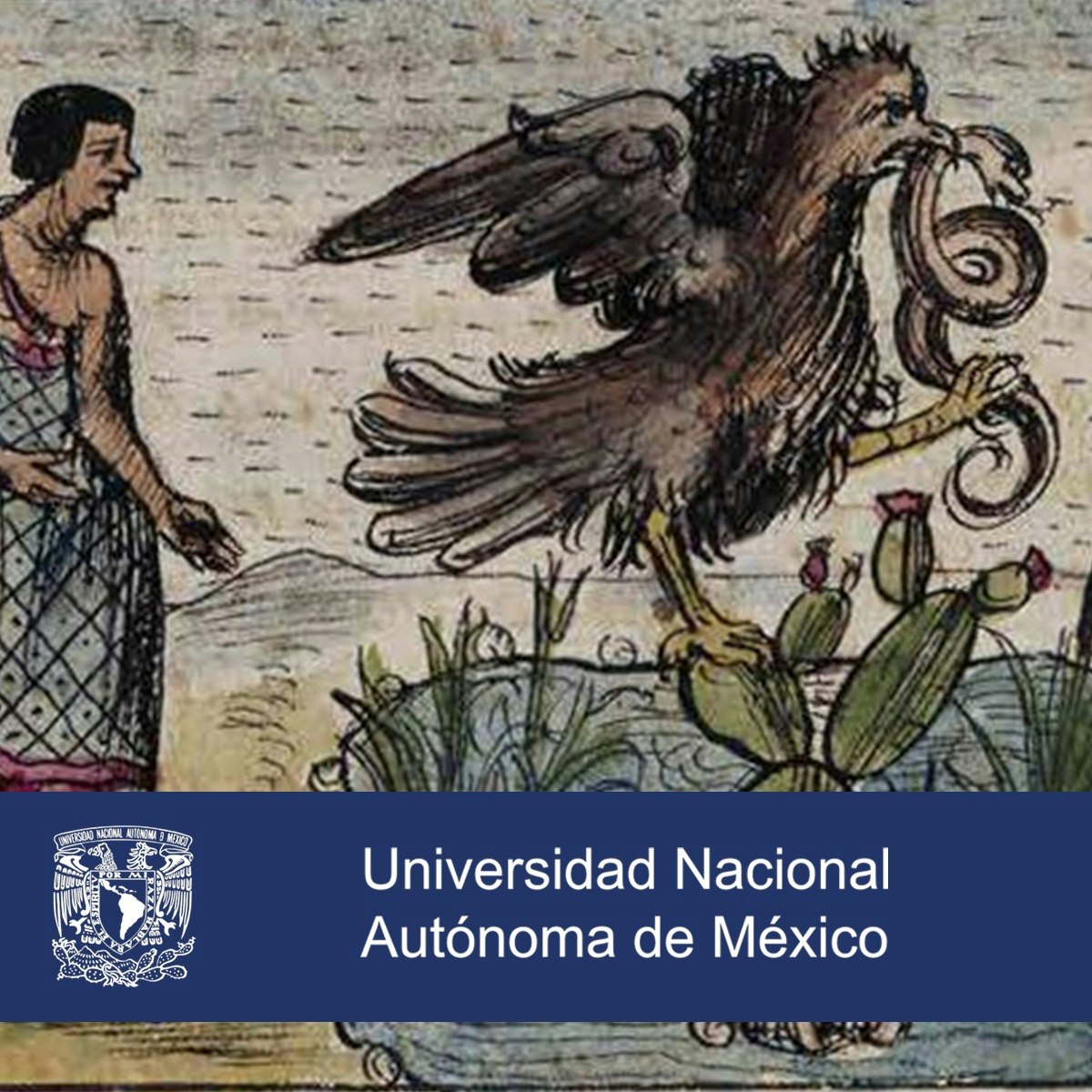
Al tomar este curso adquirirás una visión crítica de los símbolos asociados a la fundación de Tenochtitlan, y que se representan en el escudo nacional mexicano, a partir del análisis iconográfico de algunas obras de arte del Período Posclásico (1000-1521) en la zona del Altiplano central de Mesoamérica, imágenes del glifo de Tenochtitlán, imágenes de la fundación de México Tenochtitlán en los códices de tradición náhuatl elaborados durante el siglo XVI y de textos escritos por los nahuas novohispanos.
What's inside
Syllabus
Good to know
Save this course
Activities
Organize Course Resources
Show steps
Establish a system to effectively manage and review course materials.
Show steps
-
Create a dedicated space for storing notes, assignments, and readings.
-
Develop a consistent method for annotating and summarizing key concepts.
Revisit Mesoamerican History
Show steps
Recall important events leading up to the founding of Tenochtitlan to provide context.
Show steps
-
Review key historical events and the rise of Mesoamerican civilizations.
-
Summarize the development of the Aztec civilization and their cultural practices.
Read "The Nahuatl Language of Central Mexico" by James Lockhart
Show steps
This comprehensive reference book provides in-depth coverage of Nahuatl grammar, vocabulary, and historical development, enhancing your understanding of the language's nuances and its role in Mesoamerican history and culture.
Show steps
-
Read through the chapters, taking notes on key grammatical concepts, vocabulary, and historical context.
-
Complete the exercises and practice sections to reinforce your understanding.
-
Refer to the book throughout the course to supplement your learning and clarify any queries.
One other activity
Expand to see all activities and additional details
Show all four activities
Compile a Nahuatl cultural glossary
Show steps
Creating a glossary of Nahuatl cultural terms and symbols will enhance your understanding of the deeper meanings and symbolism associated with the language, providing context to the historical documents and artifacts discussed in the course.
Show steps
-
Gather a list of Nahuatl terms and symbols related to cultural practices, beliefs, and traditions.
-
Research and define each term, providing explanations of their significance and usage in Nahuatl culture.
-
Include visual representations, such as images or diagrams, to illustrate the symbols and enhance understanding.
Organize Course Resources
Show steps
Establish a system to effectively manage and review course materials.
Show steps
- Create a dedicated space for storing notes, assignments, and readings.
- Develop a consistent method for annotating and summarizing key concepts.
Revisit Mesoamerican History
Show steps
Recall important events leading up to the founding of Tenochtitlan to provide context.
Show steps
- Review key historical events and the rise of Mesoamerican civilizations.
- Summarize the development of the Aztec civilization and their cultural practices.
Read "The Nahuatl Language of Central Mexico" by James Lockhart
Show steps
This comprehensive reference book provides in-depth coverage of Nahuatl grammar, vocabulary, and historical development, enhancing your understanding of the language's nuances and its role in Mesoamerican history and culture.
Show steps
- Read through the chapters, taking notes on key grammatical concepts, vocabulary, and historical context.
- Complete the exercises and practice sections to reinforce your understanding.
- Refer to the book throughout the course to supplement your learning and clarify any queries.
Compile a Nahuatl cultural glossary
Show steps
Creating a glossary of Nahuatl cultural terms and symbols will enhance your understanding of the deeper meanings and symbolism associated with the language, providing context to the historical documents and artifacts discussed in the course.
Show steps
- Gather a list of Nahuatl terms and symbols related to cultural practices, beliefs, and traditions.
- Research and define each term, providing explanations of their significance and usage in Nahuatl culture.
- Include visual representations, such as images or diagrams, to illustrate the symbols and enhance understanding.
Career center
Anthropologist
Professor
Economist
Art historian
Museum curator
Teacher
Lawyer
Historian
Archivist
Journalist
Librarian
Archaeologist
Sociologist
Political Scientist
Doctor
Reading list
Share
Similar courses
OpenCourser helps millions of learners each year. People visit us to learn workspace skills, ace their exams, and nurture their curiosity.
Our extensive catalog contains over 50,000 courses and twice as many books. Browse by search, by topic, or even by career interests. We'll match you to the right resources quickly.
Find this site helpful? Tell a friend about us.
We're supported by our community of learners. When you purchase or subscribe to courses and programs or purchase books, we may earn a commission from our partners.
Your purchases help us maintain our catalog and keep our servers humming without ads.
Thank you for supporting OpenCourser.



